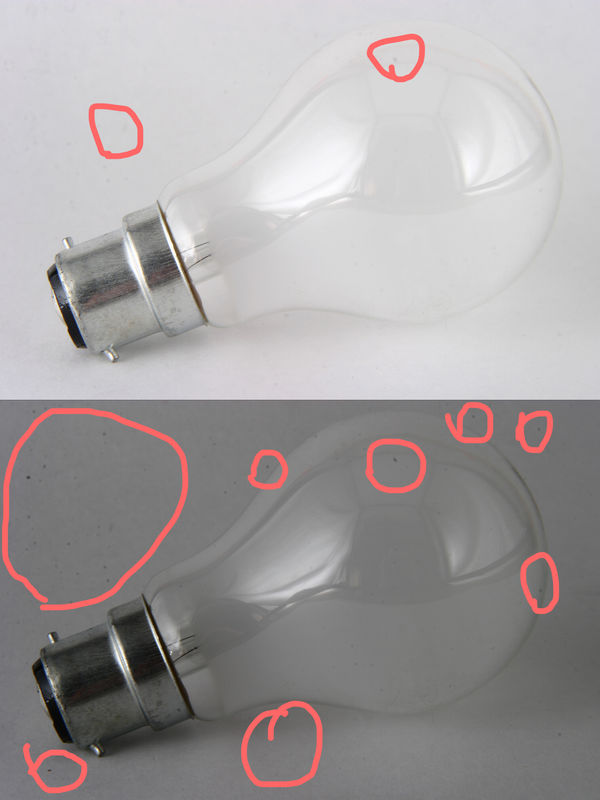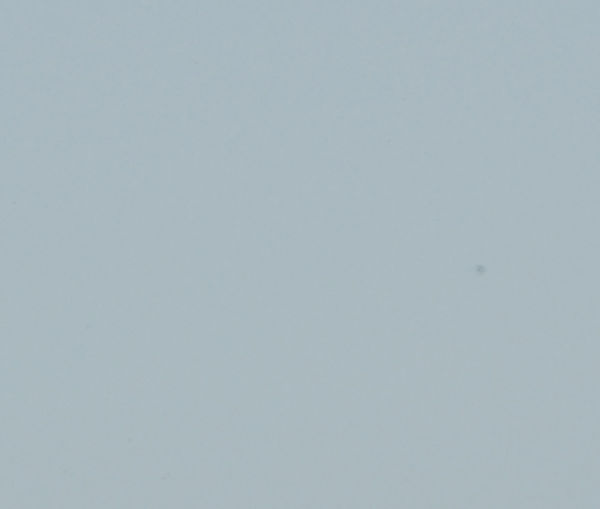Dust spot 18-135mm canon kit lens
Jul 15, 2012 16:55:11 #
I noticed a dust spot on my pictures I had taken with my 18-135 lens. I swapped out lens and do not see the pot any longer. I cleaned and cleaned removed filters and cleaned some more also the back side. Replaced the lens to the camera, again there is the spot same place. Took another look see there is a particle of dust under the front glass on the lens. Can this removed (of course by a professional not I). Or am I doomed to have to remove this spot from every picture I take.
http://www.flickr.com/photos/55890065@N03/7521664788/
It is on the left side of the mountain very close to the side of the mountain.
http://www.flickr.com/photos/55890065@N03/7521664788/
It is on the left side of the mountain very close to the side of the mountain.
Jul 15, 2012 23:58:14 #
I'm 99.997% sure the dust spot is on your sensor, not your lens. When you swapped out to your other lens, the dust may have just been in an area where it couldn't be seen.
Take a photo using a small f/stop of a clear sky, piece of white paper, blank wall or anything else that's uniformly the same, throw the image out of focus and examine the results. The small f/stop will make sure the shadow of whatever is on your sensor shows up sharply.
Cleaning a sensor can be a delicate procedure and if done incorrectly, it can ruin a sensor. I only go as far as using a "rocket" style blower bulb. Anything else will get sent out.
You should have a setting (probably in the Menu) to lock the mirror & shutter open for this. With the camera facing down and the bulb nozzle pointing at the sensor, a few quick squeezes is all it takes for me. Don't insert the nozzle beyond the lens mount!
Take a photo using a small f/stop of a clear sky, piece of white paper, blank wall or anything else that's uniformly the same, throw the image out of focus and examine the results. The small f/stop will make sure the shadow of whatever is on your sensor shows up sharply.
Cleaning a sensor can be a delicate procedure and if done incorrectly, it can ruin a sensor. I only go as far as using a "rocket" style blower bulb. Anything else will get sent out.
You should have a setting (probably in the Menu) to lock the mirror & shutter open for this. With the camera facing down and the bulb nozzle pointing at the sensor, a few quick squeezes is all it takes for me. Don't insert the nozzle beyond the lens mount!
Jul 16, 2012 00:48:03 #
GoofyNewfie wrote:
Oh..... Send it out... Go with out a camera? You know I hardly ever change my lens in the field, or at hame for that matter. Darn double darn I was tempted to use the sniffle (blow thingy on it) but I was a fraid of blowing something into my camera. I will try the different shots tomorrow.I'm 99.997% sure the dust spot is on your sensor, ... (show quote)
Jul 16, 2012 00:50:10 #
peggyjom wrote:
quote=GoofyNewfie I'm 99.997% sure the dust spot ... (show quote)
I guess I was in denial because I can see a spot on it when I checked earlier but I see as pot on the lens I can not get too also.
Jul 16, 2012 00:50:48 #
I've never sent a camera in for cleaning.
The bulb seems to do the trick for me.
And I change lenses all the time.
Check out any local repair shops for the time you need it to be none.
The bulb seems to do the trick for me.
And I change lenses all the time.
Check out any local repair shops for the time you need it to be none.
Jul 16, 2012 00:58:56 #
GoofyNewfie wrote:
I've never sent a camere in for cleaning.
The bulb seems to do the trick for me.
And I change lenses all the time.
Check out any local repair shops for the time you need it to be none.
The bulb seems to do the trick for me.
And I change lenses all the time.
Check out any local repair shops for the time you need it to be none.
I'm sorry; I can't see it.
Jul 16, 2012 01:00:47 #
Bill41 wrote:
I'm sorry; I can't see it.
GoofyNewfie wrote:
I've never sent a camere in for cleaning.
The bulb seems to do the trick for me.
And I change lenses all the time.
Check out any local repair shops for the time you need it to be none.
The bulb seems to do the trick for me.
And I change lenses all the time.
Check out any local repair shops for the time you need it to be none.
I'm sorry; I can't see it.
It's not real obvious. A round, slightly darker blue blob in the sky.
Jul 16, 2012 07:07:33 #
GoofyNewfie wrote:
I'm 99.997% sure the dust spot is on your sensor, ... (show quote)
I agree here. If you take a series of images with any lens attached of a plain white piece of paper and then under expose the next shot by a stop and so on the dust spot will show. If you then take a busy scene you might not notice it. I would send away to be cleaned also.
Jul 16, 2012 07:59:28 #
mafadecay wrote:
quote=GoofyNewfie I'm 99.997% sure the dust spot ... (show quote)
Why would you underexpose?
Jul 16, 2012 13:40:52 #
GoofyNewfie wrote:
quote=mafadecay quote=GoofyNewfie I'm 99.997% su... (show quote)
Because the dust shows up more when the image is under exposed. See attached example.
Forgive the qualtiy this image is a few years old.

Jul 16, 2012 13:51:29 #
mafadecay wrote:
quote=GoofyNewfie quote=mafadecay quote=GoofyNe... (show quote)
Great example! Is it underexposed by stopping the aperture down? That will sharpen the spots.
Jul 16, 2012 14:15:08 #
GoofyNewfie wrote:
quote=mafadecay quote=GoofyNewfie quote=mafadec... (show quote)
I remember the Canon repair agent suggesting I shoot a white object and then underexpose and repeat with another lens before sending my camera off for cleaning. The same agent also suggested focusing half way down a ruler with the lens wide open to test for back focus issues I thought I had.
You will see in the reflection that this was one of my very first DIY light tent trials and it failed some years ago. I did actually manage to get some good shots in that tent just nothing reflective.
I was testing daylight balanced craft bulbs and since i just swapped a bulb out of the desk lamps this was the closest subject to hand to test my sensor dust on. Because the light was continuous I would have probably shot at F/8 throughout and adjusted the shutter speed.
I can not swear to this as unfortunately I no longer have the original images only this merged one I used for an excercise. I can not check the meta data to check aperture.
Jul 16, 2012 14:26:06 #
mafadecay wrote:
I remember the Canon repair agent suggesting I shoot a white object and then underexpose and repeat with another lens before sending my camera off for cleaning.
I remember the Canon repair agent suggesting I shoot a white object and then underexpose and repeat with another lens before sending my camera off for cleaning.
It certainly works!
Jul 16, 2012 14:41:20 #
glojo
Loc: South Devon, England
I was taught the same way as goofy.. Take a shot of a clear blue sky .. NO CLOUDS and simply expand the image... Bob's your uncle Waltzing Matilda is your aunt. Light greyish or others can describe them as slightly darker bluish type 'blobs' .
Be VERY careful how you remove them from the sensor, do NOT use compressed air unless it is going through a filter that can absorb ALL vapour and the chances of us having something like that is practically zilch.
Round about 3 o'clock -ish.
I see goofy's comments about being out of focus but this shot was in focus although I have cropped it to just show the dust
Be VERY careful how you remove them from the sensor, do NOT use compressed air unless it is going through a filter that can absorb ALL vapour and the chances of us having something like that is practically zilch.
Round about 3 o'clock -ish.
I see goofy's comments about being out of focus but this shot was in focus although I have cropped it to just show the dust

Jul 16, 2012 14:44:58 #
glojo wrote:
I was taught the same way as goofy.. Take a shot of a clear blue sky .. NO CLOUDS and simply expand the image... Bob's your uncle Waltzing Matilda is your aunt. Light greyish or others can describe them as slightly darker bluish type 'blobs' .
Be VERY careful how you remove them from the sensor, do NOT use compressed air unless it is going through a filter that can absorb ALL vapour and the chances of us having something like that is practically zilch.
Be VERY careful how you remove them from the sensor, do NOT use compressed air unless it is going through a filter that can absorb ALL vapour and the chances of us having something like that is practically zilch.
Throwing it out of focus keeps things like birds, planes and UFO's from being identified as dust. I use an ExpoDisc. I always have one handy for white balance anyway.
If you want to reply, then register here. Registration is free and your account is created instantly, so you can post right away.



